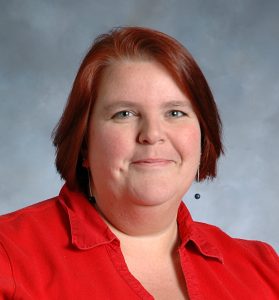
There’s a good probability that whether Di Michelson is teaching a statistics course, hiking, playing the guitar, solving cryptic crosswords or going geocaching with her family, she can tell you how math influences her day. As a senior analytical training consultant in SAS Education supporting JMP, Di shares that problem-solving potential of statistics and challenges customers to use math to make the world a better place. Read Di’s story and also be sure to read the rest of the SAS loves stats series as we focus on the International Year of Statistics.
What do you do at SAS?
I’m a Senior Analytical Training Consultant in SAS Education, supporting JMP. This means I develop and teach courses in our JMP curriculum. I also serve as a mentor to customers who need one-on-one coaching through a project.
What’s your educational background?
I have a B.S. and M.S. in Mathematics and a Ph.D. in Statistics. I was working as an industrial statistician for almost 20 years before I started with SAS two years ago.
How do you use statistics in your job?
My students are typically engineers and scientists, and I get to help them learn the basic concepts of variability and sampling uncertainty, and specific advanced topics like experimental design or modeling data or statistical process control. The best part is showing them these techniques using my favorite software, JMP.
What about statistics appeals to you?
It’s the practical side of science. If we knew the physics or chemistry behind a process, we would (and do) use science for understanding. But science isn’t at the point where it can describe real process behavior, so we use statistics to understand what’s happening.
Can you comment on the importance of statistics in education?
I went to school in the 80s and 90s, when statistics wasn’t integrated into the engineering or science colleges. I remember taking measurements on “massless, frictionless” pulleys and trying to make the theoretical line fit the data, with no explanation of why there was variability about the line. If there had been, maybe I’d be a physicist or geologist now.
For years, I’ve been asking my students about their statistical education in their graduate programs. About half of the engineers and scientists who have the same amount of industry experience as I do say they took a stat class in graduate school. The students 10 years removed from grad school all took one or two classes from the statistics department. But the new college grads are beginning to tell me that their engineering classes teach statistics. They are still taking classes from the statistics department, but they are getting reinforcement from their own colleges. I’m happy to see this trend and I know it will continue.
My own children are seeing univariate analysis in grade school. I’m excited to see what they will learn when (if?) they get to AP Statistics in a few years.
What advice would you give to students studying statistics today?
I have given talks to university students on careers in industrial statistics, and I tell them to go beyond being just a consultant – to being a real statistical engineer who learns how to solve problems with statistics and make the world a better place.
Do you have a funny or interesting story to share about statistics?
I work from my home office, and when I’m in town on a Live Web class, I’m locked away behind double doors. When I’m traveling on an assignment, I’m gone two or three nights. After I started my job at SAS, my then third-grader had an assignment to write about a career.
He wrote the following and got an A… Do you like math? Do you like money? Do you like working at home? If you do, you should be a statistician. Here are some fun things about being a statistician: You get to do math all day! Working at home is fun. Here are some bad things about being a statistician: You go on long trips. There are long conference calls. Even though there are bad things of the job, the good stuff is more important. I think math is fun. I’d like to do math, but I don’t want this job.
Do you have a favorite statistics blog or journal?
I have over 40 statistics blogs on my reader and can’t pick a favorite. I try to keep up with my technical journals: Technometrics, Journal of Quality Technology, and Quality Engineering. But I really love Chance and Significance for their readable articles (and Chance’s cryptic crossword).
Do you have a favorite statistician?
Florence Nightingale is my favorite statistician. My mother is a registered nurse, and she is her heroine as well. My mom claims to be horrible at math, so it’s nice to have someone like Florence Nightingale in common.
Are there any other hobbies or interests you’d like to share?
My hobbies are all about math! I do a lot of sewing, knitting and needlework, all of which use arithmetic and trigonometry. I sing and play guitar, as well, and there is a lot of math on the fretboard. I like solving puzzles, especially cryptic crosswords. My family also likes outdoor activities like hiking and camping and geocaching. Long walks in the woods are a great way to talk about science with kids.
